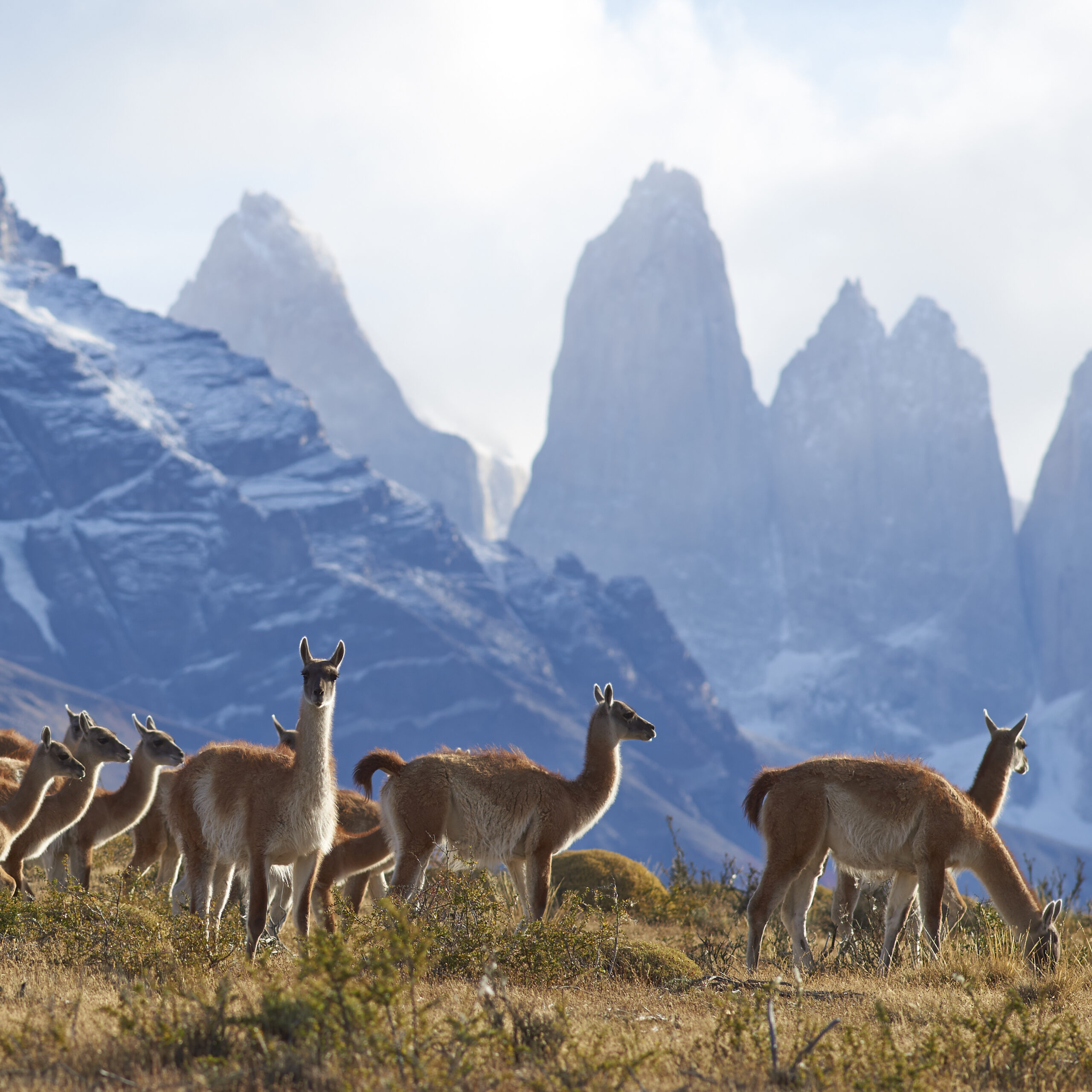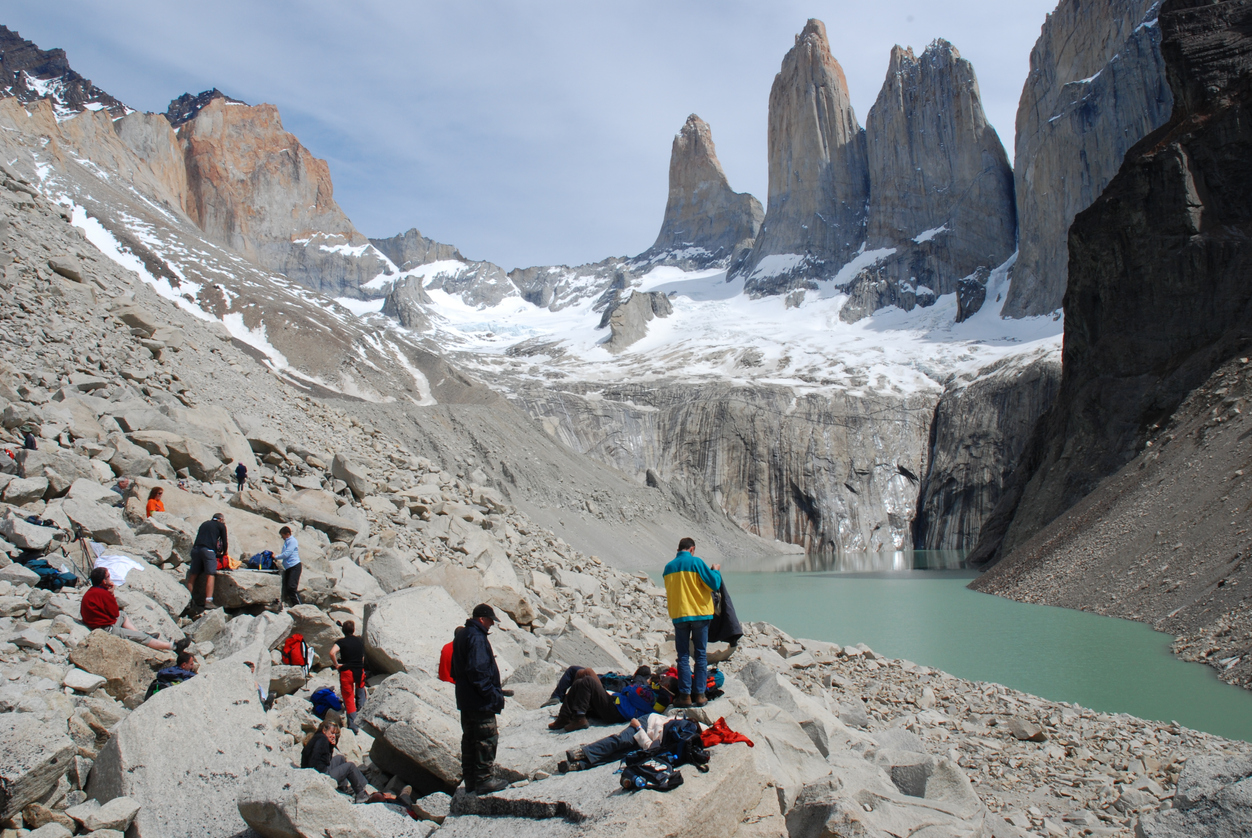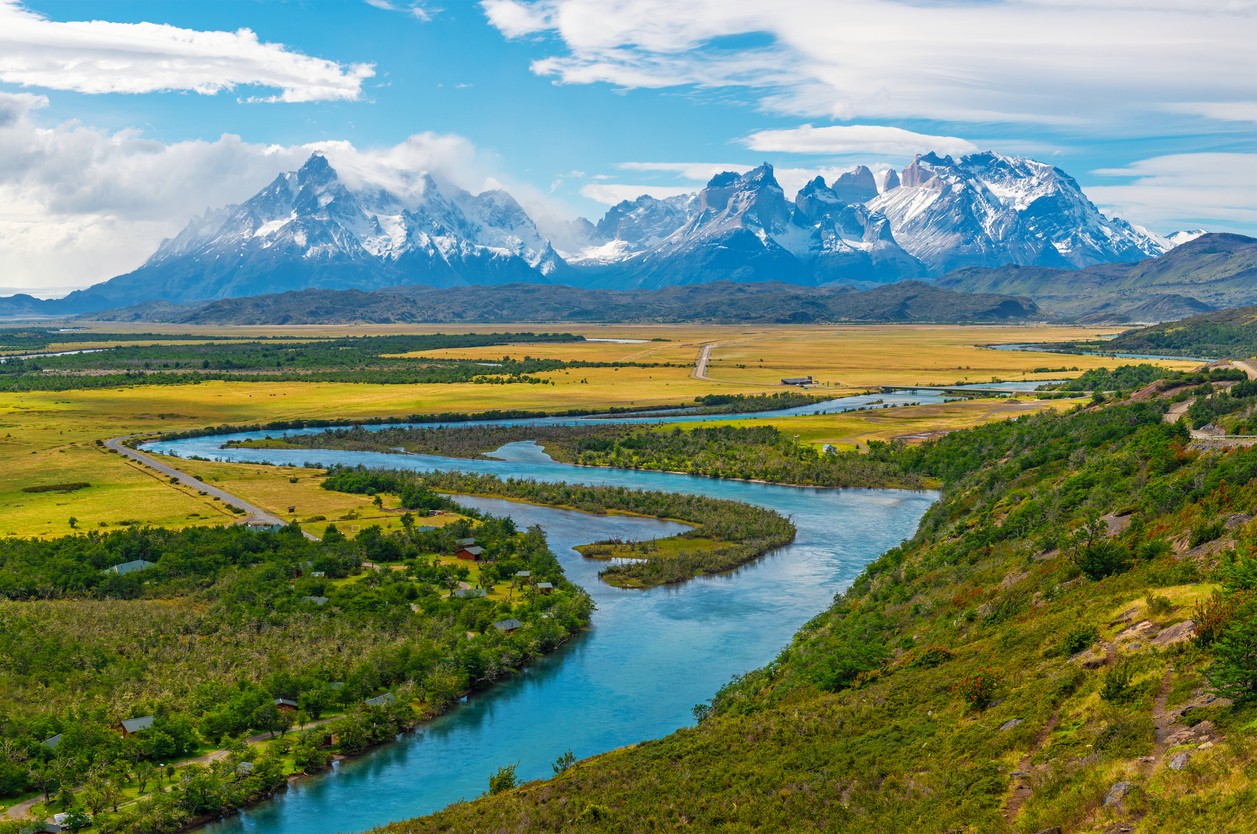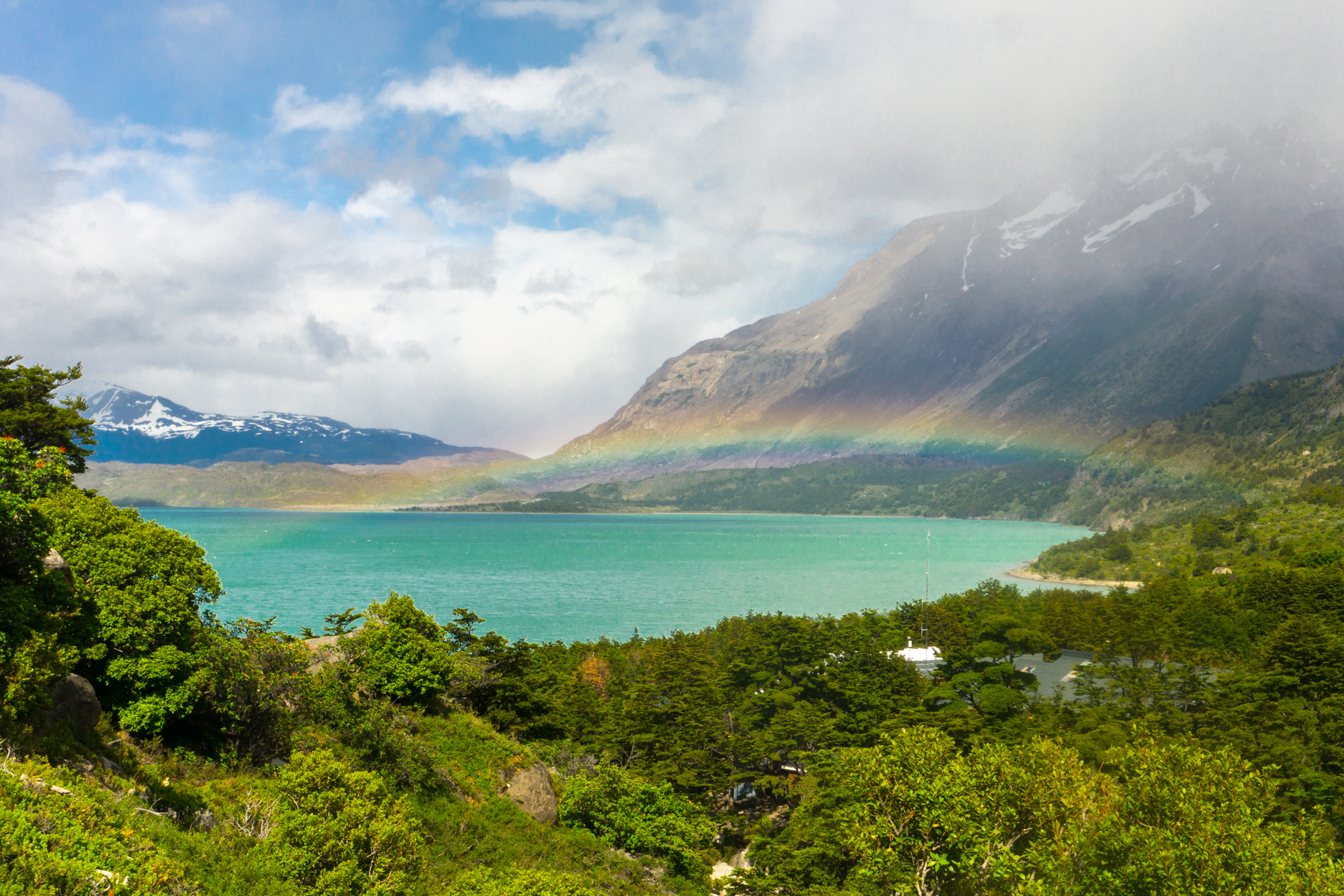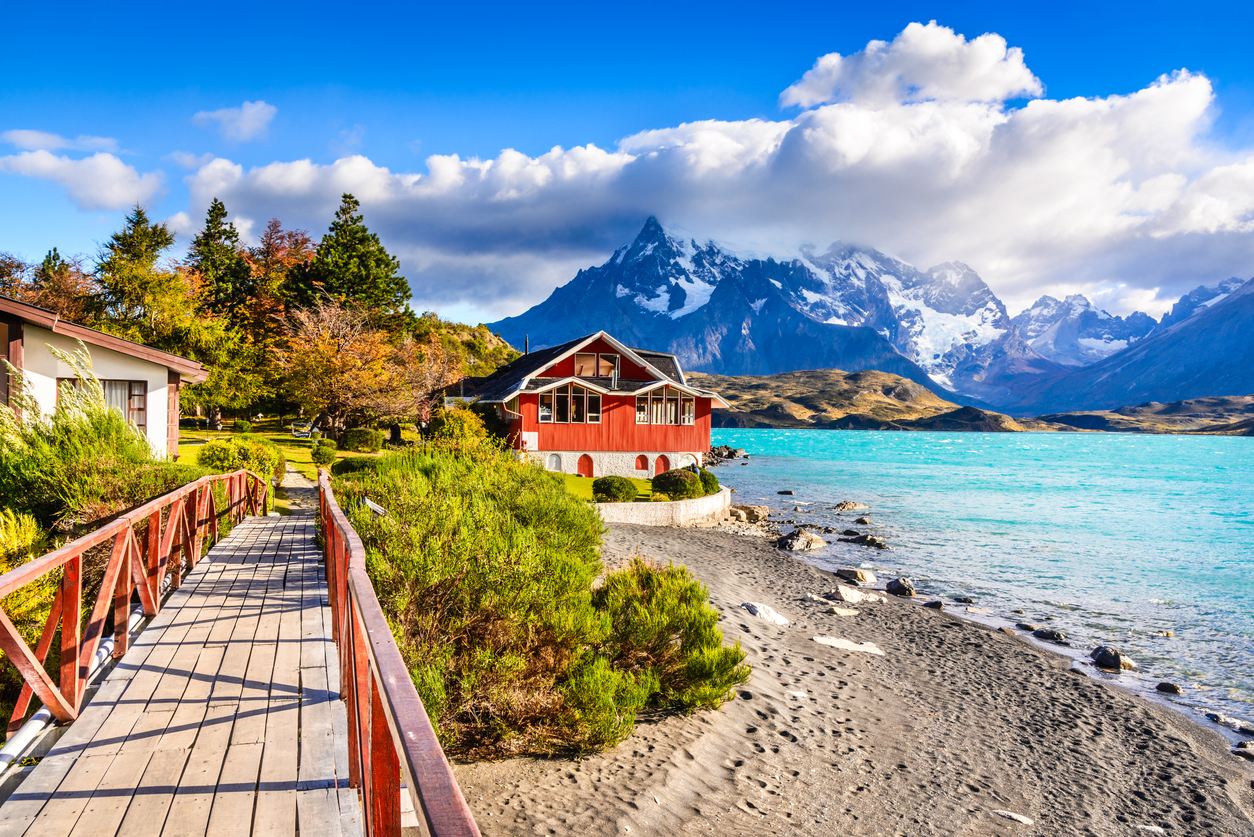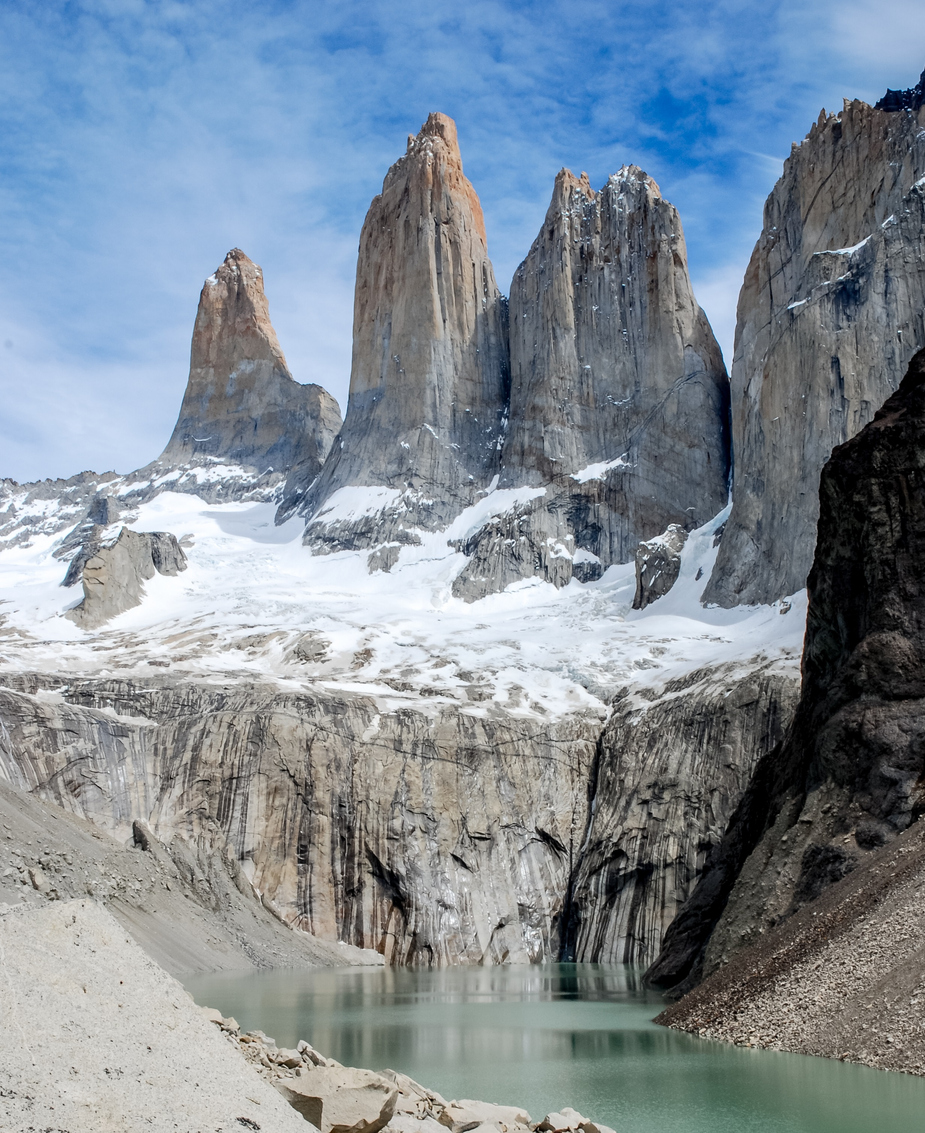Please take a few moments to watch this VIDEO from Keith and Michelle prior to booking. It highlights the most important information that we want to point out.
**Please note these dates could change a bit earlier or later as we are waiting for the refuges to open. As soon as we get confirmation from our guides we will pass that information along to all. **
Magellan district, Southern Patagonia, Chile. Patagonia lies tucked away right at the southernmost tip of the Americas – indeed of the world’s landmass, not counting Antarctica. While the very name holds a fascination for many travelers , the reality can be harsh: the place is cursed by a persistent wi nd, the “Escoba de Dios” (God’s Broom); trees grow horizontally here, sculpted by the gales; winters are long and summers short.
Geographically its defined , “Patagonia” usually refers to the narrow triangle of land south of a line between Puerto Montt, in Chile, and Argentina’s Peninsula Valdés, while in Chile the term is usually reserved for Southern Patagonia, where the Andes take a last, dramatic breath before plung ing into the ocean. These days, large numbers of Chileans and non – Chilean visitors alike c ome to Patagonia not to farm but to hike – in the country’s most famous and stunning national park, Parque Nacional Torres del Paine, a massif crowned with otherworldly granite towers, and a ccessed from the superbly located gateway town of Puerto Natales. Others come to follow in the footsteps of the region’s famous travelers : navigator Ferdinand Magellan, naturalist Charles Darwin and author Bruce Chatwin; to gaze at the region’s many spectacular gl aciers; or to visit the penguin colonies from the lively p rovincial capital of Punta Arenas – a port city sitting on the shore of the stormy Magellan Strait. Chilean Patagonia, the site of the some of the continent’s oldest human habitation, was originally populated by Tehuelche hun ter – gatherers, who stalked roam ing guanacos in the interior, and the sea – faring Kawéscar who dove naked for shellfish in the frigid waters around the southern fjords. The first European to discover the area was Ferdinand Magellan, a Portuguese navigator who sailed through the strait now bearing his name. Spanish colonization attempts failed catastrophically and no European tried to settle the place again for another two hundred and fifty years. The voyages of the Beagle, from 1826 to 1834, the second one bearing young Charles Darwin, ren ewed interest in the area, prompting continued Chilean and Argentine attempts to colonize the area. In the 1870s, the two narrowly avoided war over the territory, not for the last time. From 1849, Punta Arenas was boosted by sea traffic in – route to the Cal ifornia Gold Rush; while it did not last long, the introduction of sheep farming created sprawling estancias (ranches) and brought great wealth to their owners in the late nine teenth century. Wool has now been replaced by oil, commercial salmon farming and tourism as the region’s main resources. The Chileans call the area the province of Magallanes, in the explorer’s honors; it has its own flag and is one of the least inhabited areas in Chile.
Included:
• Private transportation f or all Adventure Custom Program “ W ” Classic Hiking Pr ogram.
• Private English Guide s in Santiago airport and Punta Arenas or Puerto Natales airport .
• Private English Guide s in all T ransfer I N/OUT .
• Private English Hiking Guide s in Torres del Paine during the “ W ” Classic Hiking Pr ogram. Groups over 8 Hikers , 01 Co – G uide Extra.
• 01 Ticket Navigation Ferry per Traveler from Paine Grande Lodge area to Pudeto area (Pehoe Lake).
• 01 Entrance fee to National Park Torres del Paine per Traveler .
• 0 2 Nights ’ accommodation based double occupancy rooms with breakfast in Hotel 3 *** Plus in Puerto Natales .
• 0 4 Nights’ accommodation in Refuge “W Circuit”. Refuges (Shared Dorms in Bunk Beds; with sleeping bag or made – up bed at Torre Central & Paine Grande refuges ( * Made up Bed: sheets + pillow + bed cover ) . Refuge “ Cuernos ” sector or Domos at “ Frances ” sector with sle eping bag and bed or sleeping mat.
• Full board Program at “W Trekking Circuit” (Breakfast, Box lunch and Dinner). Day 2 dinner, day 5 breakfast and box lunch.
• Welcome Kit: Includes sleeping – bag liner, microfiber towel, water bottle (stainless steel), a map and a journal notebook. This kit will be passed to you in the main office in Puerto Natales when you show your voucher.
Not Included:
• Travel Insurance .
• Lunch & Dinner Day 1, Lunch Day 2, Dinner Day 6, Lunch Day 7.
• Tips for Guides and Driver s . 10% of Tips is not compulsory but expected by the people.
• Domestic flights Santigo – Punta Arenas – Santiago . * We can arrange this flight under request. Cost approx. USD $ 480 per traveler approx .
• Extra Meals not mentioned at the programs.
• Extra transportation not mentioned at the programs.
• Drinks or beverages not included.
• Anything not listed in the itinerary
